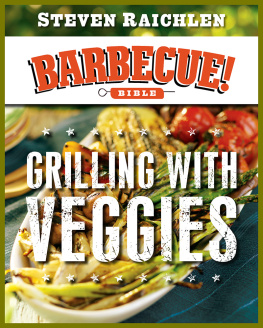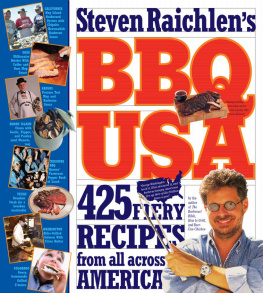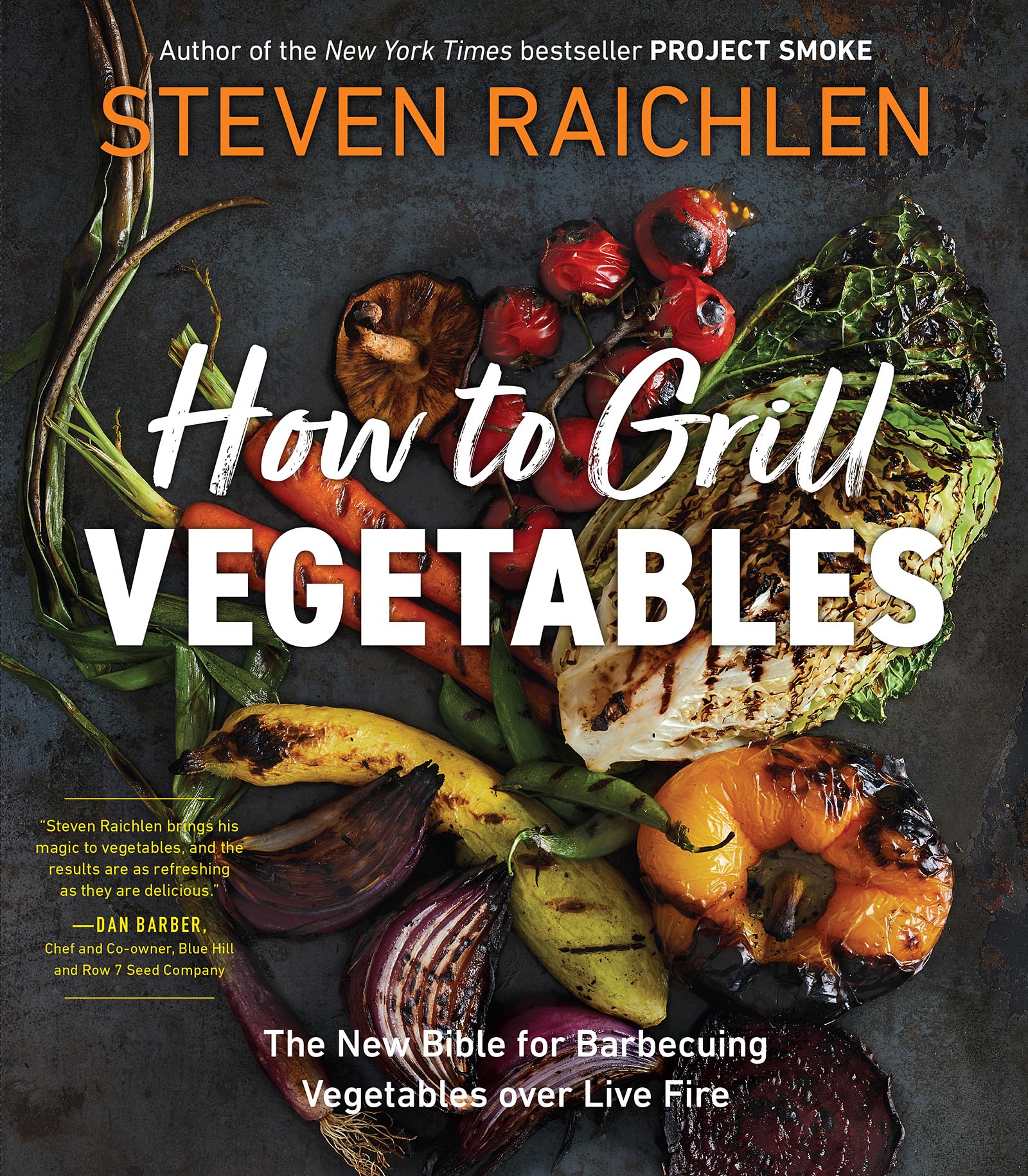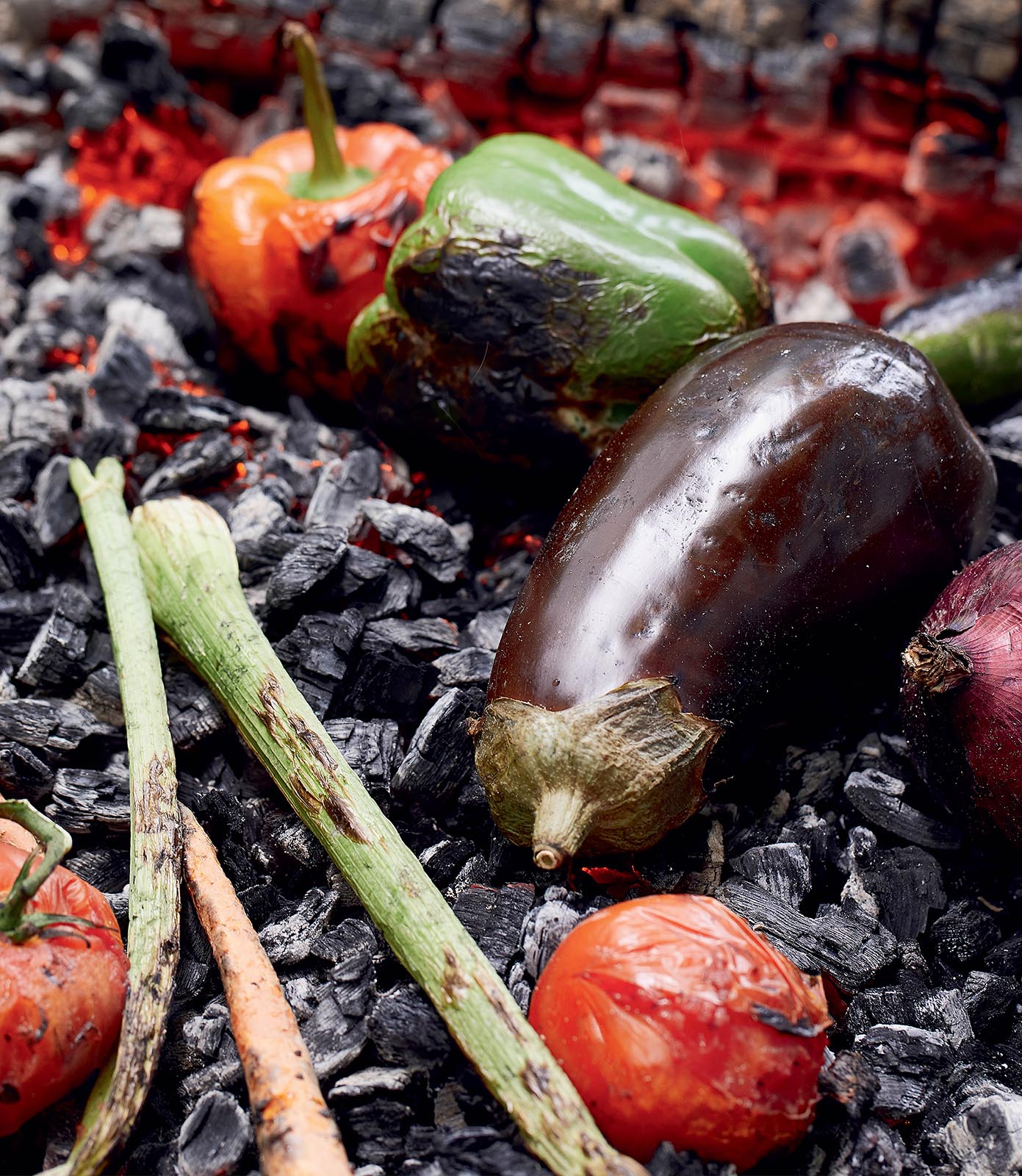Acknowledgments
T he cover of this book lists as its author Steven Raichlen. But I couldnt have written it without the generous help of my extended barbecue family.
Godmother (den mother?) of that family is my longtime assistant, Nancy Losekedotter of is, crosser of ts, whose tireless efforts enable me to stay focused while multitasking. Thats no easy feat and it simply wouldnt happen without her.
Workman Publishing has been my publisher for 27 years, and there Im guided by my brilliant editor Kylie Foxx McDonald, photo director Anne Kerman, art director Becky Terhune, executive director of marketing and publicity Rebecca Carlisle, and director of publicity Chloe Puton. Molly Kay Upton, Moira Kerrigan, and Cialina Temena-Husemann keep our website and social media humming, while Carolan Workman, Susan Bolotin, Suzanne Rafer, Dan Reynolds, Page Edmunds, Sarah Curley, Kate Karol, Barbara Peragine, Doug Wolff, and many others are always there when I need them. We all labor under the inspiration of the late Peter Workman, our founding publisher, mentor, and friend.
If you like the photos in this book as much as I do, youll join me in thanking food stylist Nora Singley and food stylist assistants Alyssa Kondracki and Sami Ginsberg, prop stylist Betty Blau, photographer Steven Randazzo, and photo assistant Nick Mehedin.
And if you like my TV show, Project Fire Season 3, which is largely based on this book, youll join me in acknowledging Matt Cohen, Ryan Kollmorgan, and Gwenn Williams of Resolution Pictures; plus Steven Schupak, Anna Trapani, Stuart Kazanow, Frank Batavick, Mike English, Donna Hunt, and many other friends at Maryland Public Television. Id also like to thank our fire wrangler Steve Nestor; chef Chris Lynch (love that fire cider); and Craig Reed just for being himself.
I have been fortunate to have a small army of first-rate recipe testers, including Evan Atkinson, Steven Carne, Nick Clark, Gerald Dlubala, Todd Evans, Timothy Hibbard, Rob Kettenring, Jake Klein, JP Lavoie, Max Lavoie, Freddy Leong, Steve Nestor, Derick Thielbar, and Glenn Tiede.
Material support for the photo shoot came from Big Green Egg, The Companion Group, Fire Magic, Kai USA, KUDU, Lodge Cast Iron, Southbay Forgeworks, Staub, Weber, and YETI.
Last, but certainly not least: Thanks to my immediate familyElla, Mia, Julian, Betsy, Jake, and Amenya, grilled vegetable lovers allwho add sparks to my fire and a spring to my step. And above all, thanks to my wife, Barbaralongtime counselor, collaborator, partner, and best friend. Happy anniversary, honey! I couldnt have done it without you.
Steven Raichlen
Miami, Florida
Introduction
S omewhere between the wood fireblistered tomato toasts I ate at a Yotam Ottolenghi restaurant in London, and the shiitake bacon pioneered by visionary vegan chef Rich Landau, vegetables hit the grill big time.
Vegetables we love to cook over live fire, like peppers, corn, and zucchini.
Vegetables we would never have dreamt of grilling, such as okra and brussels sprouts on the stalk.
Vegetables that use edgy grilling techniques traditionally reserved for animal proteins, such as ember-grilling, salt-slab grilling, and hay-smoking.
Meatless proteins, like Cambodian grilled eggs, smoked ham that is really tofu, and cheesesteaks made with grilled seitan and rutabaga cheese. Really.
Veggies for hardcore carnivores who value the health and environmental benefits of incorporating more plant foods into their diets, or simply want killer accompaniments for grilled meats.
Veggies for anyoneomnivore, flexivore, pescatarian, vegetarian, veganwho delights in the smokiness and supernatural sweetness live fire imparts to plants.
Its enough to make you envy your vegetarian and vegan friends who have known for years what some meat eaters are just now discovering: the gustatory thrill of grilling vegetables, fruit, breads, cheese, eggs, and meatless proteins.
Never have so many forward-thinking grill masters and chefs brought so much creativity to what for decades was relegated to side dishes.
And never has the man who brought you The Barbecue! Bible and The Brisket Chronicles been more excited about writing a grill book that focuses on plant foods with nary a T-bone or sparerib in sight.
Welcome to How to Grill Vegetables.
Grilling has evolved a lot in the two-plus decades since I wrote The Barbecue! Bible. How to Grill Vegetables covers the grilling basics, of course, but also includes the new grilling and smoking techniques used by cutting-edge chefs around the world to bring vegetables from the periphery to the center of the plate. For vegetables possess an astonishing range of colors, textures, and tastesespecially when grilled or smoked. Whether youre a carnivore or omnivore looking for electrifying new flavors, or a vegetarian/vegan looking to up your grill game, this book has you covered.
Think out-of-the-box hay-smoked lettuce, caveman grilled squash, flatbread cooked directly in the coals, and more. Think traditional world vegetarian barbecue classics, such as Brazilian grilled cheese skewers (). Yes, there will be flaming pineapple and cedar-planked hasselback apples for dessert.
If youve read my books or watched my TV shows, you know that vegetables have always been part of my grill worldfrom the earliest days of The Barbecue! Bible. But this is the first time Ive brought them together in a single book, putting them center stage, as it were, and emphasizing the new ways in which people are firing up their grills and smokers to cook plant and dairy foods.
I wrote this book to celebrate the incredible flavors these foods have to offer the griller and smoke master. True, most of the recipes in this book are meatless (which will make our vegetarian friends happy), but there are plenty of recipes that contain a bit of meat or seafood to elevate the flavors of a dishfor example, smoked German-style potato salad (). This book is not about ideology. It all boils down to (or maybe I should say grills up to) great eating and good taste.
Chapter 1
How to Grill Vegetables Like a Pro in 9 Easy Steps
G rilling plant and dairy foods draws on the same skill set used for grilling meat, seafood, or pretty much anything. You choose your grill, fuel, and tools, and fire them up. You master the basic grilling techniques, target temperatures, and how to recognize doneness. You practice good grill management and hygiene, of course, with safety at the top of your list. In short, you follow the advice covered extensively in many of my previous books, such as


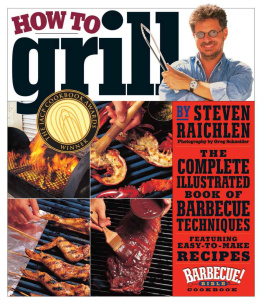
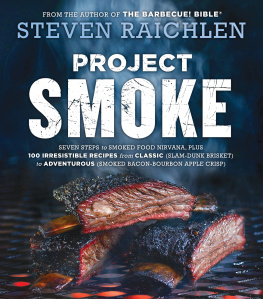
![Raichlen - Barbecue Sauces, Rubs, and Marinades—Bastes, Butters & Glazes, Too [eBook - Biblioboard]](/uploads/posts/book/229830/thumbs/raichlen-barbecue-sauces-rubs-and.jpg)
